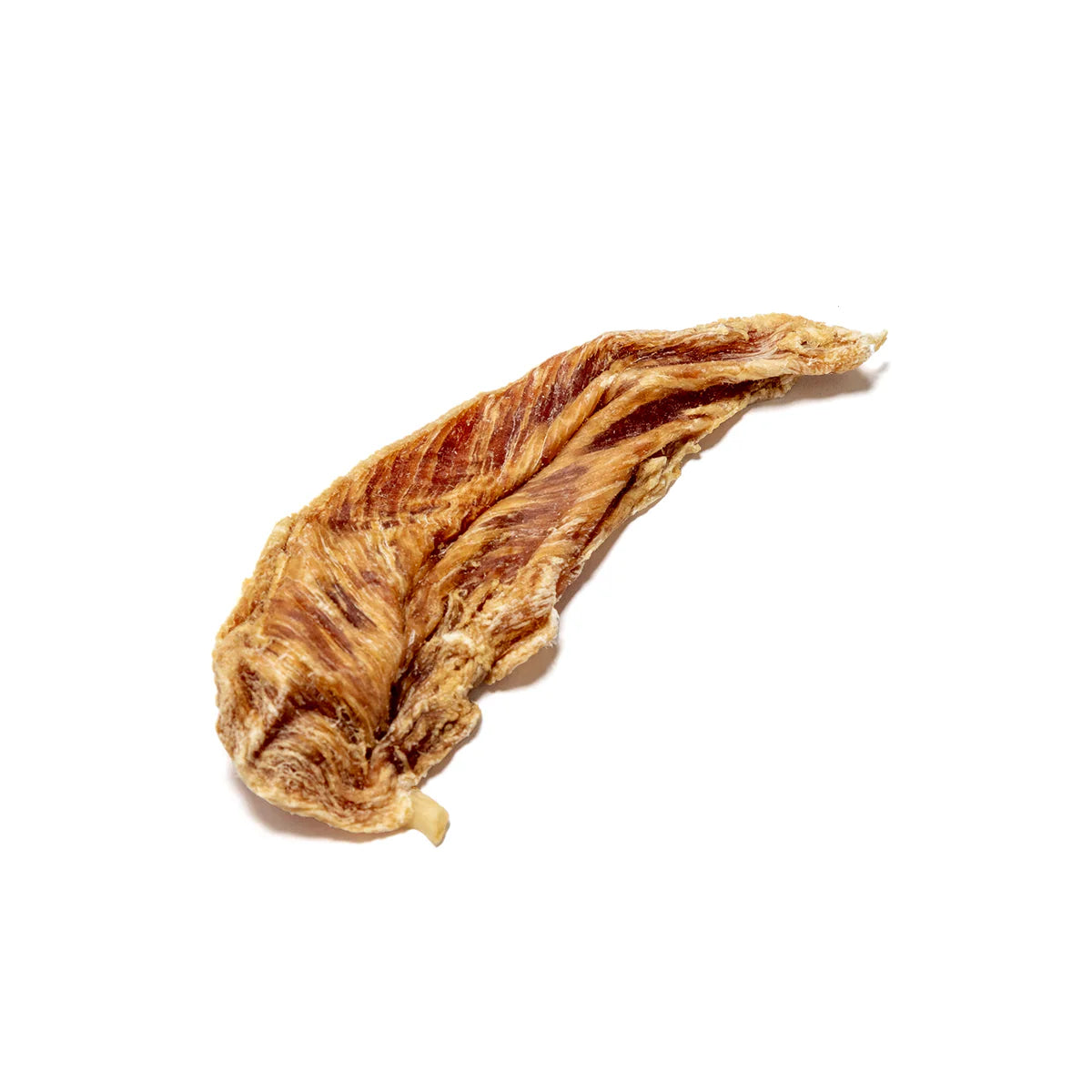Natural Dog Treats Vs Conventional Dog Treats: What’s the Difference?
Share
As a dog owner, you undoubtedly want the best for your pet’s health and happiness. One of the most impactful ways to ensure their well-being is through their diet, specifically the treats they enjoy. But not all dog treats are created equal. Understanding the key differences between 100% natural dog treats and conventional options can help you make informed choices. Let’s explore why it matters, the significant health benefits of natural treats, and how they compare to their conventional counterparts.
1. Why You Should Care About What Your Dog Eats
Nutrition Equals Longevity
The old adage “you are what you eat” applies to dogs, too. Feeding them highly processed, nutrient-deficient treats can lead to chronic health issues such as obesity, allergies, and digestive discomfort. Conversely, natural treats packed with real, wholesome ingredients support their immune system, promote healthy skin and coats, and provide sustained energy.
Behavioural Impact
Diet also influences behaviour. Studies published in the Journal of Veterinary Behaviour have linked low-quality diets with hyperactivity and aggression in dogs. High-quality, natural treats can help maintain balanced energy levels and a calmer temperament, contributing to an overall happier dog.
Environmental Responsibility
Many natural treat producers focus on sustainability, using ethically sourced ingredients and eco-friendly packaging. By choosing natural options, you’re not only prioritising your dog’s health but also supporting environmentally responsible practices.

2. Understanding the Key Differences
Ingredients Matter
Natural dog treats are made from whole, unprocessed ingredients, such as high-quality meats, fruits, and vegetables. They are free from artificial preservatives, colours, and flavours. By contrast, many conventional treats rely on low-cost fillers like corn, wheat, or soy, which provide little nutritional value. Additionally, conventional options may contain synthetic additives to enhance flavour or prolong shelf life, which can pose risks to your dog’s health over time.
Minimal Processing
The preparation methods for natural dog treats are often designed to retain maximum nutritional value. For example, air-drying or freeze-drying preserves vitamins and minerals. Conventional treats, on the other hand, often undergo high-temperature processing, which can degrade nutrients and result in a product that’s more about taste than nutrition.
3. Health Benefits of Natural Dog Treats
Improved Digestive Health
Natural treats made with simple, recognisable ingredients are easier for dogs to digest. Without artificial fillers, dogs are less likely to experience bloating or gastrointestinal discomfort. According to Natures Menu, a raw and natural diet can lead to better digestion and firmer stools, which are signs of a healthy gut.
Allergy Reduction
Dogs with sensitivities or allergies can benefit significantly from natural treats. Conventional options often include common allergens such as wheat, soy, or dairy. Natural alternatives, especially those with limited ingredients, minimise exposure to potential irritants.
Better Dental Health
Certain natural treats, like air-dried meats or raw bones, can help clean teeth and gums by reducing plaque and tartar build-up. The Kennel Club highlights the dental benefits of natural chews, noting that they support oral hygiene without the need for artificial dental products.
Weight Management
Overweight dogs are at risk of developing serious health issues, including joint problems and heart disease. Many natural treats are lower in calories and free from unhealthy fats, making it easier to maintain a healthy weight while still rewarding good behaviour or training.
Enhanced Immune Support
The nutrient density of natural treats, rich in vitamins, antioxidants, and essential fatty acids, strengthens the immune system. Ingredients like salmon, sweet potatoes, and blueberries are often featured in natural treats for their immune-boosting properties.

Expert Opinions and Scientific Support
Several studies and veterinary experts underscore the importance of feeding natural, high-quality treats:
-
The Kennel Club advises that treats should be part of a balanced diet, free from harmful additives and tailored to the individual dog’s needs. (Source)
-
Research published in Frontiers in Veterinary Science highlights the role of nutrition in preventing chronic diseases, emphasising the need for minimally processed, nutrient-rich foods.
-
All About Dog Food, a leading UK resource, rates natural treats higher for their digestibility and lack of synthetic ingredients. (Source)
Making the Switch to Natural Treats
Transitioning to natural treats doesn’t have to be overwhelming. Start by reading labels carefully and choosing products with limited, recognisable ingredients. At Charlie’s Natural Treats, we’ve made this simple by curating a collection of 100% natural options that prioritise quality and health.
Conclusion
The difference between 100% natural dog treats and conventional options is more than skin deep. By choosing natural treats, you’re investing in your dog’s health, happiness, and longevity. The benefits—from improved digestion to enhanced immunity—are undeniable, and your dog will thank you for it in their own way.
Ready to give your dog the best nature has to offer? Explore our 100% Natural Dog Treats Collection today and make the switch to healthier snacking.

